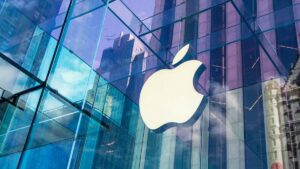Market Highlights: Oil, iron ore stocks on watch; and should we worry about the ‘September Effect’?

Should we be concerned about the ‘September Effect’? Pic via Getty Images
- The ASX is likely to open steady as Wall Street was closed
- Iron ore prices have fallen but remain stable
- September is historically tough for investors
The ASX is likely to open steady on Tuesday, with Wall Street closed for Labor Day and European shares trading within a narrow range.
At 8am AEST, the SPI ASX200 futures contract was pointing up by 0.1%.
Overnight, European markets were little changed as investors sifted through a bunch of economic data for insights into the European Central Bank’s future policy moves.
The benchmark STOXX 600 index was down a modest 0.02%, near its recent peak following data showing Euro zone inflation at a three-year low.
German DAX saw a slight increase of 0.13%, but despite a record close, uncertainties persisted following populist gains in recent state elections.
London’s FTSE dropped 0.15%, and Paris’s CAC rose 0.2%.
The iron ore price has slumped another 4% to US$96.95 a tonne, but it remains significantly higher than during the last steel crisis of 2015-2016.
Citigroup says its sees “soft support” for the price at US$90 and “hard support at US$80, and that any drop lower is unlikely to hold for too long.
Meanwhile, oil prices continued to climb, rebounding another 1% after Libya’s declaration of force majeure at the El-Feel oilfield.
Libya’s National Oil Corporation (NOC) cited “uncontrollable circumstances” affecting Mellitah crude oil production as the reason for halting loading operations.
Libya’s recent move to halt crude exports, combined with a recent complete shutdown of output and exports in the eastern part of the country, have tightened supply in recent days.
Back home, data release in Australia will include a crucial component for the Q2 GDP report which is scheduled for release on Wednesday.
This includes the net export contribution to GDP from the Q2 Current Account data. The consensus estimate is 0.6%, a turnaround from Q1’s -0.9%.
Should we be worried about the ‘September Effect’?
September has a history of being tough for investors, going back nearly a century, and this year could be even more challenging than ever.
The uncertainty surrounding the US election, geopolitical tensions, and potential Federal Reserve interest rate cuts are adding to the risks.
Known as the “September Effect,” this pattern reflects a calendar-based anomaly in the market, occurring without a clear cause or specific event.
Stocks, bonds, and gold have often struggled in September, with major indexes such as the S&P 500 and Dow Jones seeing significant losses in the past.
But some experts are sceptical, saying that stocks aren’t influenced by the calendar year or the specific month.
“If there was a good reason stocks consistently performed poorly in September, investors would respond by selling beforehand, pushing the downturn to late August,” said a note from Fisher Investments.
But as investors brace for the latest US jobs report on Friday, which could influence future Fed decisions, markets are poised for potential turbulence.
Any surprises could lead to big swings in the market.
Back to markets …
Gold price fell by 0.15% to US$2,499.87 an ounce.
Oil prices rose by almost 1%, with Brent crude now trading at US$77.36 a barrel.
The benchmark 10-year US Treasury yield traded flat at 3.91% due to US holiday.
The Aussie dollar climbed by 0.4% to US67.92 cents.
Bitcoin meanwhile was higher by 1% in the last 24 hours to US$59,085 and Ethereum rallied by 2% to US$2,545.
5 ASX small caps to watch today
Noxopharm (ASX:NOX)
Noxopharm has made significant strides with its Chroma platform, showing promising results in new brain cancer treatments. The company’s novel drugs, CRO-70 and CRO-71, have effectively reduced tumour growth by around 76% in preclinical tests and demonstrated the ability to cross the blood-brain barrier. Initial studies also suggest a favourable safety profile for these drugs. Additionally, early research on a Chroma drug for leukaemia is underway.
Knosys (ASX:KNO)
Knosys has secured a five-year contract with the Office of the Director of Public Prosecutions for Western Australia to provide its KnowledgeIQ platform, with an option to extend by up to two additional years. The contract is worth up to $985,000. Knosys says the contract validates the company’s position as a leading enterprise Knowledge Management solution provider in Australia to government and financial institutions.
Golden Deeps (ASX:GED)
GED has intersected a substantial 80m zone of copper and zinc sulphides at its Havilah Project in NSW. Drillhole HVD003 revealed high-grade mineralisation, with portable XRF readings showing up to 18.5% copper and 34.8% zinc. This discovery, along with other significant intersections in the initial drill holes, suggests the presence of a large porphyry-sulphide system similar to major copper-gold finds in the Lachlan Fold Belt. The company is continuing its drilling program and awaits laboratory assay results to confirm the grades and extent of the mineralisation.
Great Boulder Resources (ASX:GBR)
GBR has confirmed high-grade gold mineralisation extending 250m north of its Mulga Bill resource with recent reverse circulation drilling. Notable results include intersections of up to 27.94g/t gold. The mineralised zone now spans over 2.3km. Two deep diamond drill holes have been completed, with results expected in October, and further drilling is planned to upgrade resource estimates and test new targets.
Biome Australia (ASX: BIO)
The microbiome health company announced that after a strong start to the September quarter, Q1 sales revenue is expected to surpass $4.0m. This result will lead to a new record quarter for sales revenue after last quarter’s record of $3.8m (Q4 FY24).
Related Topics
UNLOCK INSIGHTS
Discover the untold stories of emerging ASX stocks.
Daily news and expert analysis, it's free to subscribe.
By proceeding, you confirm you understand that we handle personal information in accordance with our Privacy Policy.








